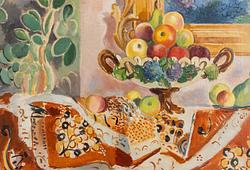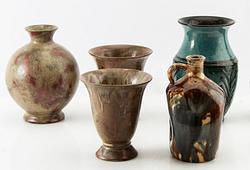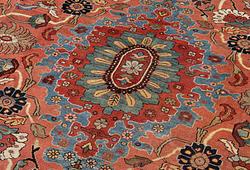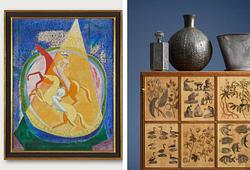Anders Zorn
Anders Zorn, "Professor John Berg"
Etching, 1912, signed in pencil. Plate 17.8 x 12 cm.
Not examined out of the frame.
Literature
Asplund 252, Hjert & Hjert 157.
More information
Johan (John) Vilhelm Berg (known as "Father Berg"), born in 1851 in Stockholm, died in 1931 in Stockholm, was a Swedish physician and professor. In the district of Stadshagen on Kungsholmen (Stockholm), John Berg's plan is named after him.
Berg became a student in Uppsala in 1869, where he became a candidate in medicine in 1874. After obtaining his medical licentiate at the Karolinska Institute in 1878 and serving as an assistant during 1878–79, he was appointed as an associate professor of surgery there in 1881 and was promoted to Doctor of Medicine in Uppsala the same year after defending his thesis Studies on the Tongue Cancer and its Treatment.
From 1880 to 1885, he served as an assistant physician at the Orthopaedic Institute. In 1885, he was appointed as an extraordinary professor of surgery at the Karolinska Institute and as senior surgeon at the Serafimer Hospital, and he also held the position of chief physician at the Crown Princess Lovisa's Institution for Sick Children from 1885 to 1892. From 1893 to 1916, he was a full professor of surgery at the Karolinska Institute and senior surgeon at the Serafimer Hospital, as well as head of its economy and administration. From 1914 to 1919, he was a member of the Scientific Council of the Medical Board, from 1917 to 1920 he was the inspector for the institutions for the disabled, and from 1918 to 1919 he was the chairman among experts for the investigation regarding medical education. Berg also energetically advocated for the establishment of a radiology institute and the Radium Home. Annually after his appointment to the professorship, he published Reports from the Royal Serafimer Hospital and became the editor of the surgical section of the Nordic Medical Archive in 1901.
He became a member of the Royal Swedish Academy of Sciences in 1901. He was awarded an honorary doctorate in medicine from the University of Kristiania in 1910, became an honorary member of the Swedish Medical Society in 1911, a member of the Royal Swedish Academy of War Sciences in 1915, and an honorary member of the Medical Society in Copenhagen in 1922.
Artist
Anders Zorn, born in Mora in 1860, showed artistic talent from a young age. In 1875, he traveled to Stockholm and became a student at the then Slöjdskolan (now Tekniska högskolan) in Stockholm, and shortly after, he joined the Royal Academy of Fine Arts. Initially, Zorn had aspirations of becoming a sculptor, but soon watercolor painting took over, becoming his primary medium until 1887. At the student exhibition in 1880, Zorn had his breakthrough with the watercolor painting "I sorg." The following year, he gained international acclaim as a portrait painter. His watercolor painting reached its pinnacle during this period, and his most famous work from this time is "Vårt dagliga bröd” from 1886. Shortly thereafter, Zorn transitioned to oil painting, which was met with immediate success. Zorn's reputation mainly rested on his portrait art, and he portrayed many notable figures, including presidents. For instance, he created an etching of Theodore Roosevelt. His etchings significantly contributed to his success. In the late 1880s, Zorn began working in the genre that would increasingly become his trademark: nude figures in outdoor settings. He had long been fascinated by the movement of water and the reflections of light on its surface. Now, he added the complexity of placing a model near or in the water, aiming to depict a synthesis between nature and humanity. In 1896, Zorn and his wife moved back to Sweden and settled in Zorngården in Mora. This move sparked a renewed interest in his homeland, which would be reflected in his future paintings. Among the artist's scenes from the Mora region, portraying its local customs and ancient traditions, "Midsommardansen" holds the highest value according to Zorn himself. Today, the painting can be found at the National Museum.
Read more






































